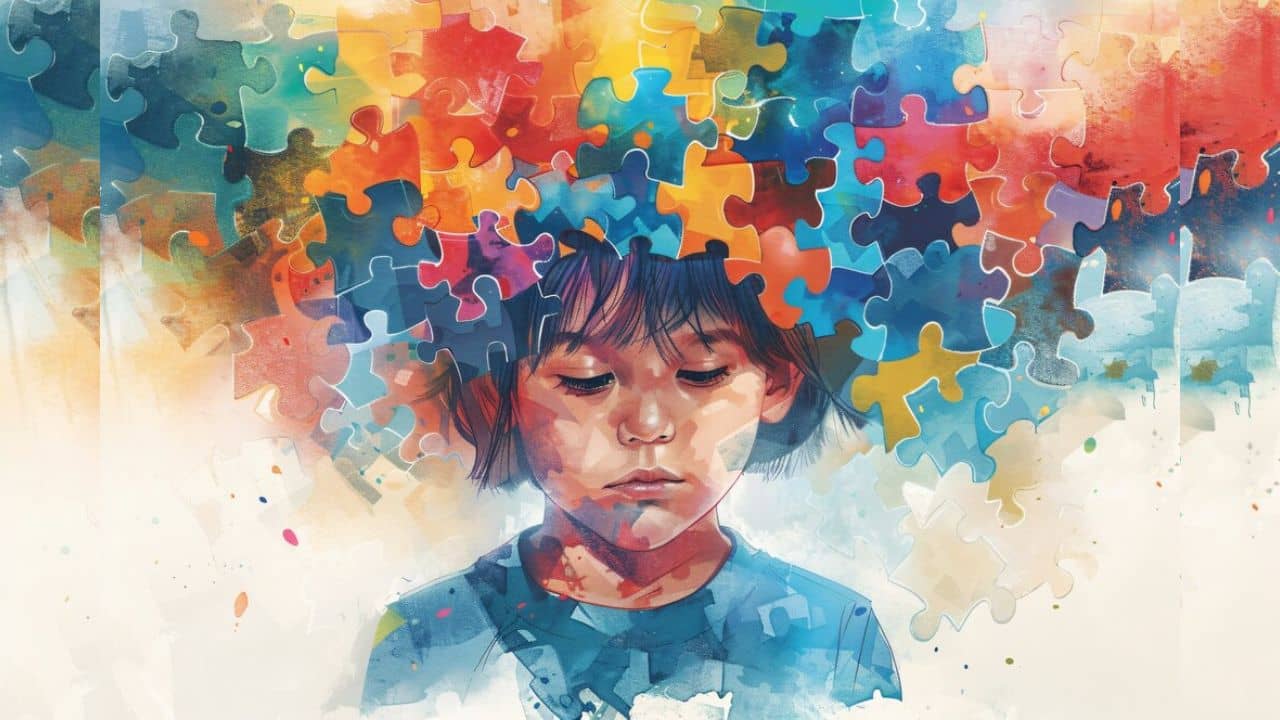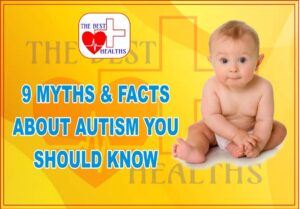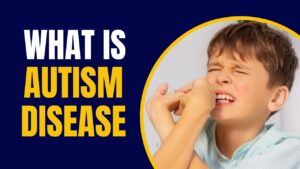Autism, or Autism Spectrum Disorder (ASD), is a lifelong neurodevelopmental condition that typically manifests in early childhood, though signs and symptoms can sometimes be detected later. The term “spectrum” in autism spectrum disorder refers to the wide range of symptoms, skills, and levels of impairment or disability that people with ASD can have. Understanding autism requires an appreciation of its complexity and variability.
What is Autism?
Key Characteristics of Autism
1. Social Interaction Difficulties:
- Impaired Social Understanding: Individuals with autism often find it challenging to interpret social cues such as facial expressions, body language, and tone of voice. This can lead to difficulties in forming and maintaining relationships.
- Limited Eye Contact: Many individuals with autism may avoid eye contact or find it uncomfortable.
- Challenges with Reciprocity: This includes difficulty in back-and-forth conversations and understanding the give-and-take nature of social interactions.
2. Communication Challenges:
- Delayed Language Development: Some children with autism might not speak at all, while others may develop language skills later than their peers.
- Unusual Speech Patterns: This can include echolalia (repeating phrases or sounds), atypical prosody (rhythm and intonation), and using overly formal or literal language.
- Difficulty with Pragmatics: Pragmatic language skills, or the social use of language, can be particularly challenging. This includes understanding humor, sarcasm, and figurative language.
3. Repetitive Behaviors and Restricted Interests:
- Repetitive Movements: Commonly referred to as “stimming,” these behaviors include hand-flapping, rocking, spinning, or other repetitive motions.
- Strict Routines: Many individuals with autism thrive on routine and can become distressed with changes to their daily schedule.
- Intense Focus on Specific Interests: People with autism might develop deep, specific interests in particular subjects or activities and engage with them in highly focused ways.
4. Sensory Sensitivities:
- Hypersensitivity: Over-reactivity to sensory stimuli such as loud noises, bright lights, or certain textures.
- Hyposensitivity: Under-reactivity, where an individual may not respond to certain sensory inputs, like not feeling pain in a typical manner.
Variability in Autism
Autism is highly individualistic, meaning that two people with autism can present vastly different traits and behaviors. This variability is why autism is described as a spectrum. Some individuals might require significant support in their daily lives, while others, often referred to as having high-functioning autism or Asperger’s Syndrome, might live independently but still face social and communicative challenges.
Diagnosis and Early Signs
Autism is typically diagnosed in early childhood, although some individuals might not receive a diagnosis until later in life. Key early signs to watch for include:

- Lack of babbling or pointing by age one.
- No single words by 16 months or two-word phrases by age two.
- No response to their name.
- Poor eye contact.
- Excessive lining up of toys or objects.
- No smiling or social responsiveness.
A comprehensive evaluation by specialists, including developmental pediatricians, neurologists, and psychologists, is essential for a proper diagnosis. This usually involves behavioral assessments, parental interviews, and sometimes standardized tests.
Importance of Early Intervention
Early intervention is crucial for improving outcomes for individuals with autism. Programs that focus on enhancing communication, social skills, and adaptive behaviors can make a significant difference. These might include:
- Behavioral Interventions: Applied Behavior Analysis (ABA) is a common approach that uses positive reinforcement to improve social, communication, and learning skills.
- Speech Therapy: Helps with language development and effective communication.
- Occupational Therapy: Focuses on improving daily living skills and sensory integration.
Living with Autism
Living with autism presents unique challenges, but with appropriate support and understanding, individuals with autism can lead fulfilling lives. Acceptance and accommodation in society, such as inclusive education, employment opportunities, and community support, play vital roles in enhancing the quality of life for people with autism.
Raising Awareness
Efforts to raise awareness and understanding of autism are critical. World Autism Awareness Day and Autism Awareness Month are dedicated to increasing public knowledge, combating stigma, and fostering a more inclusive society. Educational campaigns, autism awareness posters, and community events help to highlight the strengths and challenges of individuals with autism.

In summary, autism is a complex and multifaceted condition that affects individuals differently. Understanding its characteristics, recognizing early signs, and providing tailored support and interventions are key to helping those on the autism spectrum thrive.
Autism Spectrum Disorder: Definition and Types
Autism Spectrum Disorder (ASD) is referred to as a “spectrum” because it encompasses a wide range of symptoms and levels of severity. The core characteristics of ASD include:
- Social Communication Challenges: Difficulties with verbal and non-verbal communication, such as maintaining eye contact, understanding body language, and participating in conversations.
- Repetitive Behaviors and Restricted Interests: Engaging in repetitive actions, adhering to specific routines, and having intense, focused interests.
- Sensory Sensitivities: Over or under-reactivity to sensory inputs like sounds, lights, textures, and smells.
ASD is usually diagnosed in early childhood, although symptoms can sometimes be subtle and go unrecognized until later in life. The diagnosis is based on behavioral observations and developmental history, often involving a multidisciplinary team of healthcare professionals.
Types of Autism Spectrum Disorder
ASD is a broad category that includes several subtypes, each with unique characteristics. These subtypes were previously classified separately but are now grouped under the ASD umbrella in the Diagnostic and Statistical Manual of Mental Disorders, Fifth Edition (DSM-5). Here are the primary types:

1. Classic Autism (Autistic Disorder):
Characteristics: Significant language delays, social and communication challenges, and unusual behaviors and interests. Often accompanied by intellectual disability.
Symptoms: Limited verbal skills, repetitive behaviors (e.g., hand-flapping), intense focus on specific interests, and difficulty with social interactions.
Also Read:- Classic Autism vs. Virtual Autism : A Comprehensive Comparison
2. Asperger Syndrome:
Characteristics: Milder symptoms compared to classic autism, with no significant language delays and average to above-average intelligence.
Symptoms: Challenges in social interactions, restricted interests, and repetitive behaviors. Individuals may have advanced language skills but struggle with pragmatics (the social use of language).
3. Pervasive Developmental Disorder-Not Otherwise Specified (PDD-NOS):
Characteristics: Also known as atypical autism, this subtype includes individuals who meet some but not all criteria for classic autism or Asperger syndrome.
Symptoms: Vary widely but generally include fewer or less severe symptoms than classic autism. May involve social and communication difficulties and some repetitive behaviors.
4. Childhood Disintegrative Disorder (CDD):
Characteristics: A rare condition where children develop typically for at least two years and then experience a severe regression in multiple areas, including language, social skills, and motor abilities.
Symptoms: Loss of previously acquired skills in communication, social interaction, and play, typically occurring between ages 3 and 4.
5. Rett Syndrome (included in DSM-IV but now recognized as a separate genetic disorder):
Characteristics: Primarily affects females and is associated with a genetic mutation (MECP2). It involves normal early growth followed by a loss of motor and language skills.
Symptoms: Loss of purposeful hand skills, repetitive hand movements, slowed growth, and intellectual disability.
Recognizing the Variability within the Spectrum
The term “spectrum” is crucial in understanding ASD because it highlights the diversity of experiences and abilities among individuals with autism. Some people may have significant challenges and require substantial support in daily life, while others may live independently and excel in specific areas.
Levels of Support
To better categorize the variability, the DSM-5 defines three levels of support needed:
1. Level 1: Requiring Support:
Individuals may have difficulty initiating social interactions and may appear to have decreased interest in social engagements. They may also have difficulty organizing and planning, which can hamper independence.
2. Level 2: Requiring Substantial Support:
Individuals show more noticeable deficits in verbal and non-verbal communication and social interactions. Their repetitive behaviors and restricted interests are frequent enough to be obvious to the casual observer.
3. Level 3: Requiring Very Substantial Support:
Individuals have severe deficits in verbal and non-verbal communication and social interaction. Their repetitive behaviors significantly interfere with their daily functioning.
Importance of Individualized Support and Treatment
Understanding that ASD is a spectrum emphasizes the importance of individualized approaches to treatment and support. Interventions should be tailored to meet the specific needs and strengths of each person. Common interventions include:

- Behavioral Therapies: Applied Behavior Analysis (ABA), social skills training, and other behavioral interventions to develop essential skills.
- Educational Support: Specialized education plans, often implemented in collaboration with schools and educators, to support learning and development.
- Therapies: Speech and language therapy, occupational therapy, and physical therapy to address specific developmental needs.
- Medical and Dietary Interventions: When appropriate, addressing co-occurring conditions such as anxiety, ADHD, or gastrointestinal issues.
Autism Spectrum Disorder is a complex and diverse condition that affects individuals in myriad ways. By understanding the definition and types of ASD, we can appreciate the unique experiences of those on the spectrum and the importance of providing personalized support to help them thrive. Increasing awareness and acceptance of autism’s variability is essential in fostering an inclusive society where everyone can reach their full potential.
Symptoms and Signs of Autism
Autism Spectrum Disorder (ASD) presents a wide array of symptoms and signs that can vary significantly from one individual to another. These symptoms are generally categorized into three main areas: social interaction difficulties, communication challenges, and repetitive behaviors and restricted interests. Additionally, sensory sensitivities are often observed in individuals with autism. Understanding these symptoms can help in early identification and intervention, which are crucial for improving outcomes.

Social Interaction Difficulties
1. Challenges in Understanding Social Cues:
- Difficulty interpreting facial expressions, body language, and tone of voice.
- Trouble understanding and responding to social norms and expectations.
2. Limited Eye Contact:
Avoidance or limited eye contact during interactions, which can make social connections more challenging.
3. Difficulty in Forming Relationships:
- Struggles with making and maintaining friendships.
- Limited interest in social interactions and activities that involve peers.
4. Lack of Joint Attention:
Difficulty in sharing focus on an object or activity with another person, which is a foundational social skill.
5. Preference for Solitary Activities:
Enjoyment of solitary play or activities over engaging with others.
Communication Challenges
1. Delayed Language Development:
- Not speaking or significantly delayed speech development.
- Limited use of gestures such as pointing or waving.
2. Unusual Speech Patterns:
- Echolalia (repeating words or phrases).
- Monotone or robotic speech intonation.
- Difficulty modulating volume, pitch, or rhythm of speech.
3. Challenges with Pragmatic Language:
Difficulty understanding and using language in social contexts, including humor, sarcasm, and idioms.
4. Limited Use of Nonverbal Communication:
Difficulty using and understanding body language, facial expressions, and gestures.
5. Literal Understanding:
Tendency to interpret language literally, which can lead to misunderstandings.
Repetitive Behaviors and Restricted Interests

1. Repetitive Movements (Stimming):
- Repetitive actions such as hand-flapping, rocking, spinning, or head-banging.
- These behaviors can be self-soothing or a response to sensory overload.
2. Strict Routines and Rituals:
Strong preference for predictable routines and resistance to changes in daily activities or environment.
3. Intense Focus on Specific Interests:
- Deep, narrow interests in specific topics or activities, often to the exclusion of other interests.
- Extensive knowledge about particular subjects.
4. Need for Sameness:
Distress or anxiety when routines are disrupted or environments change.
Sensory Sensitivities
1. Hypersensitivity (Over-Responsiveness):
- Overreaction to sensory inputs such as loud noises, bright lights, strong smells, certain textures, or tastes.
- Avoidance of sensory experiences that are overwhelming.
2. Hyposensitivity (Under-Responsiveness):
- Under-reaction to sensory inputs, such as not responding to sounds, pain, or temperature changes.
- Seeking sensory stimulation, such as spinning or touching objects excessively.
Early Signs of Autism in Different Age Groups
1. Infants and Toddlers:
- Lack of babbling or cooing by 12 months.
- No gestures such as pointing, waving, or showing objects by 12 months.
- No single words by 16 months or two-word phrases by 24 months.
- Loss of language or social skills previously acquired.
- Limited interest in other children or play.
2. Preschool Children:
- Difficulty engaging in pretend play or imitating others.
- Limited interest in playing with peers.
- Unusual attachment to specific toys or objects.
3. School-Aged Children:
- Struggles with understanding social rules and making friends.
- Difficulty with changes in routine or transitioning between activities.
- Advanced language skills but challenges with pragmatic language and social nuances.
4. Adolescents and Adults:
- Continued challenges with social interactions and understanding relationships.
- Persistent repetitive behaviors and restricted interests.
- Difficulties with independent living skills and employment.
- Increased awareness of being different, which can lead to anxiety or depression.
- Recognizing the Diversity in Symptoms
It’s important to recognize that symptoms can vary widely among individuals with autism. Some people may exhibit only a few symptoms, while others may display many. The severity of symptoms can also range from mild to severe. Understanding this variability is crucial for providing appropriate support and interventions tailored to each individual’s needs.
Autism Spectrum Disorder encompasses a broad range of symptoms and signs that can affect social interaction, communication, behavior, and sensory processing. Early identification of these symptoms is essential for timely intervention, which can significantly improve outcomes for individuals with autism. By recognizing and understanding the diverse manifestations of autism, we can better support those on the spectrum and promote a more inclusive society.
Causes of Autism
The exact causes of Autism Spectrum Disorder (ASD) remain unknown, but research indicates that a combination of genetic, environmental, and possibly epigenetic factors contribute to its development. Understanding the causes of autism is a complex and evolving area of study, and ongoing research continues to uncover new insights.

Genetic Factors
1. Heritability and Family Studies:
Autism tends to run in families, suggesting a strong genetic component. Siblings of children with autism are at a higher risk of being diagnosed with the disorder.
Twin studies have shown higher concordance rates for autism in identical twins compared to fraternal twins, indicating a significant genetic influence.
2. Genetic Mutations and Variations:
Certain genetic mutations and variations are associated with an increased risk of autism. These include both inherited and de novo (newly arising) mutations.
Specific genes involved in brain development and function have been implicated, such as those affecting synaptic function and neural connectivity.
3. Genetic Syndromes:
Some genetic syndromes, such as Fragile X syndrome, Rett syndrome, and Tuberous Sclerosis, are known to have a higher prevalence of autism, suggesting a link between these conditions and ASD.
Environmental Factors
1. Prenatal and Perinatal Influences:
Various factors during pregnancy and birth may increase the risk of autism. These include advanced parental age (both mother and father), maternal illness or infection during pregnancy, and complications during birth such as low birth weight or prematurity.
2. Exposure to Toxins and Substances:
Prenatal exposure to certain environmental toxins and substances, such as pesticides, heavy metals, and certain medications, has been studied for potential links to autism.
Research has also explored the potential role of prenatal exposure to valproic acid, a medication used to treat epilepsy and bipolar disorder, in increasing the risk of autism.
3. Nutritional Factors:
Maternal nutrition and deficiencies during pregnancy, such as a lack of folic acid, have been investigated for their potential impact on the development of autism.
Epigenetic Factors
1. Gene-Environment Interactions:
Epigenetics refers to changes in gene expression that do not involve alterations to the DNA sequence but are influenced by environmental factors. These changes can potentially affect the development of autism.
Environmental exposures, such as toxins or stress during pregnancy, may lead to epigenetic modifications that impact gene function and contribute to the risk of autism.
Theories and Hypotheses
1. Brain Development and Connectivity:
Research suggests that abnormalities in brain development and connectivity may play a role in autism. This includes differences in the size and structure of certain brain regions, as well as atypical patterns of neural connectivity.
2. Immune System Dysfunction:
Some studies have proposed that immune system dysfunction, both in the mother during pregnancy and in the child after birth, may be linked to autism. This includes abnormal immune responses and inflammation.
3. Gut-Brain Axis:
Emerging research has explored the potential connection between gut health and brain function, known as the gut-brain axis. Some studies suggest that gastrointestinal issues and differences in the gut microbiome may be associated with autism symptoms.
Myths and Misconceptions about Autism

1. Vaccines:
The claim that vaccines, particularly the MMR (measles, mumps, and rubella) vaccine, cause autism has been thoroughly debunked by extensive research. Numerous studies have found no link between vaccines and autism, and major health organizations, including the CDC and WHO, affirm the safety and importance of vaccination.
2. Parental Practices:
Early theories suggested that parenting styles, such as the “refrigerator mother” hypothesis, caused autism. These ideas have been discredited, and it is now understood that autism is not caused by parenting practices.
The causes of autism are multifaceted, involving a complex interplay of genetic, environmental, and potentially epigenetic factors. While significant progress has been made in understanding these influences, much remains to be discovered. Continued research is essential to unravel the precise mechanisms underlying autism and to develop effective interventions and supports for individuals with ASD and their families. Understanding the diverse factors that contribute to autism can also help dispel myths and promote a more informed and compassionate perspective on the condition.
Diagnosis and Testing of Autism
Diagnosing Autism Spectrum Disorder (ASD) involves a comprehensive evaluation by a team of professionals, typically including developmental pediatricians, neurologists, psychologists, and speech and language therapists. Early diagnosis and intervention are crucial for improving outcomes for individuals with autism. The diagnostic process generally includes developmental screenings, comprehensive diagnostic evaluations, and the use of standardized assessment tools.

Developmental Screenings
1. Routine Pediatric Check-Ups:
Pediatricians often perform developmental screenings during routine check-ups to identify early signs of developmental delays, including autism. These screenings typically occur at 9, 18, and 24 or 30 months of age.
2. Parental Questionnaires:
Parents may be asked to complete questionnaires about their child’s development, behavior, and social interactions. Common screening tools include the Modified Checklist for Autism in Toddlers (M-CHAT) and the Ages and Stages Questionnaires (ASQ).
3. Observation of Milestones:
Pediatricians observe whether the child meets typical developmental milestones, such as babbling, gesturing, and responding to their name. Delays or atypical behaviors may prompt further evaluation.
Comprehensive Diagnostic Evaluation
1. Multidisciplinary Team Assessment:
A team of specialists conducts a thorough evaluation, often including a developmental pediatrician, child psychologist, speech and language therapist, and occupational therapist. This team approach ensures a holistic understanding of the child’s strengths and challenges.
2. Medical and Developmental History:
Detailed information is gathered about the child’s medical history, developmental milestones, family history, and any previous assessments or interventions. This history helps to identify patterns and potential risk factors.
3. Behavioral Observations:
Direct observation of the child’s behavior across different settings and situations is crucial. Specialists look for signs of autism, such as difficulty with social interactions, communication challenges, and repetitive behaviors.
Standardized Assessment Tools
1. Autism Diagnostic Observation Schedule (ADOS):
The ADOS is a standardized, play-based assessment used to observe and evaluate social and communication behaviors in children suspected of having autism. It consists of various activities designed to elicit behaviors related to autism.
2. Autism Diagnostic Interview-Revised (ADI-R):
The ADI-R is a structured interview conducted with parents or caregivers to gather detailed information about the child’s developmental history and current behaviors. It focuses on communication, social interaction, and repetitive behaviors.
3. Developmental and Behavioral Questionnaires:
Additional standardized questionnaires, such as the Childhood Autism Rating Scale (CARS) and the Social Communication Questionnaire (SCQ), may be used to assess the severity of symptoms and support the diagnostic process.
Additional Evaluations
1. Speech and Language Assessment:
A speech and language therapist evaluates the child’s communication skills, including language comprehension, expressive language, and pragmatic (social) language use.
2. Occupational Therapy Evaluation:
An occupational therapist assesses the child’s fine motor skills, sensory processing, and daily living skills to identify any areas of difficulty and recommend appropriate interventions.
3. Psychological and Cognitive Testing:
A child psychologist may conduct cognitive and psychological tests to assess the child’s intellectual functioning, adaptive behavior, and emotional well-being. These tests help to identify any co-occurring conditions, such as anxiety or ADHD.
Genetic and Medical Testing
1. Genetic Testing:
Genetic testing, such as chromosomal microarray analysis or whole-exome sequencing, may be recommended to identify any genetic mutations or abnormalities associated with autism. This can provide valuable information for understanding the underlying causes and informing family planning decisions.
2. Medical Examinations:
A comprehensive medical examination, including a review of the child’s medical history and any relevant laboratory tests, helps to rule out other conditions that may present with similar symptoms. This can include metabolic or neurological disorders.
3. Hearing and Vision Tests:
Hearing and vision tests ensure that sensory impairments are not contributing to communication or behavioral difficulties.
Differential Diagnosis
1. Excluding Other Conditions:
The diagnostic process involves differentiating autism from other developmental or psychiatric conditions that may have overlapping symptoms, such as language disorders, intellectual disability, social (pragmatic) communication disorder, or attention-deficit/hyperactivity disorder (ADHD).
2. Co-Occurring Conditions:
Many individuals with autism have co-occurring conditions, such as anxiety, epilepsy, gastrointestinal issues, or sensory processing disorders. Identifying and addressing these conditions is crucial for comprehensive care.
Importance of Early Diagnosis
Early diagnosis of autism is vital for several reasons:
1. Timely Intervention:
Early intervention programs can significantly improve outcomes by addressing developmental delays and enhancing social, communication, and adaptive skills.
2. Parental Support and Education:
Early diagnosis allows parents to access resources, support, and education to better understand and support their child’s development.
3. Educational Planning:
Schools can develop individualized education plans (IEPs) tailored to the child’s specific needs, ensuring appropriate support and accommodations in the educational setting.
4. Access to Services:
An early diagnosis enables families to access various services and therapies, such as speech therapy, occupational therapy, and behavioral interventions, which can be critical for the child’s development.
The diagnosis and testing of autism involve a comprehensive and multidisciplinary approach, including developmental screenings, detailed evaluations, and standardized assessment tools. Early diagnosis is crucial for providing timely and effective interventions that can significantly improve the quality of life for individuals with autism and their families. By understanding the diagnostic process, parents, caregivers, and professionals can work together to support the development and well-being of those with autism.
Autism Treatment and Therapies
Autism Spectrum Disorder (ASD) requires a comprehensive approach to treatment and therapy, tailored to the individual’s unique needs and strengths. While there is no cure for autism, a variety of interventions can help improve social skills, communication, and behavior, enhancing overall quality of life. Early intervention is particularly crucial, as it can significantly improve outcomes for children with autism. Below are some of the most common and effective treatments and therapies for autism.

Behavioral Therapies
1. Applied Behavior Analysis (ABA):
Description: ABA is a widely used, evidence-based approach that focuses on improving specific behaviors, such as social skills, communication, and academics, as well as decreasing problematic behaviors.
Techniques: Uses positive reinforcement to encourage desirable behaviors and skills, and various techniques such as discrete trial training (DTT) and pivotal response training (PRT).
2. Pivotal Response Treatment (PRT):
Description: A form of ABA that focuses on pivotal areas of a child’s development, such as motivation, response to multiple cues, and social initiations.
Techniques: Emphasizes natural reinforcement and child choice within a structured framework, making learning opportunities more engaging.
3. Early Start Denver Model (ESDM):
Description: An early intervention approach that combines ABA principles with developmental and relationship-based strategies for children aged 12 to 48 months.
Techniques: Focuses on play-based activities to improve language, social skills, and cognitive abilities.
Developmental and Social-Relational Approaches
1. Developmental, Individual-Differences, Relationship-Based Model (DIR/Floortime):
Description: Focuses on fostering emotional and intellectual growth by engaging children through activities they enjoy, encouraging them to interact and communicate.
Techniques: Involves following the child’s lead, creating meaningful interactions, and gradually challenging the child to achieve higher levels of social, emotional, and intellectual functioning.
2. Social Skills Training:
Description: Helps individuals with autism develop social communication skills necessary for interacting with peers and adults.
Techniques: Uses role-playing, modeling, and reinforcement to teach skills like initiating conversations, understanding social cues, and building friendships.
3. Relationship Development Intervention (RDI):
Description: A family-based, behavioral treatment designed to address core symptoms of autism by helping individuals form personal relationships and improve social-emotional skills.
Techniques: Focuses on dynamic intelligence, such as problem-solving, adapting to change, and perspective-taking.
Communication Therapies
1. Speech and Language Therapy:
Description: Aims to improve verbal and non-verbal communication skills, helping individuals with autism express themselves more effectively.
Techniques: May include exercises to enhance articulation, receptive and expressive language skills, and the use of alternative communication methods such as picture exchange communication systems (PECS) or speech-generating devices.
2. Augmentative and Alternative Communication (AAC):
Description: Provides alternative methods of communication for those who have significant difficulties with verbal communication.
Techniques: Includes tools like communication boards, sign language, and electronic devices that produce speech.
Occupational and Sensory Integration Therapies
1. Occupational Therapy (OT):
Description: Helps individuals with autism develop the skills needed for daily living and independence, such as dressing, feeding, and managing time.
Techniques: Focuses on fine motor skills, coordination, and sensory processing through activities tailored to the individual’s needs.
2. Sensory Integration Therapy:
Description: Addresses sensory processing issues commonly seen in individuals with autism, helping them respond to sensory input in a more adaptive way.
Techniques: Uses activities that challenge the sensory systems, such as swinging, bouncing, or playing with textured materials, to improve sensory integration and regulation.
Educational Interventions
1. Individualized Education Programs (IEPs):
Description: Customized educational plans designed to meet the specific learning needs of students with autism within the public school system.
Techniques: Involves setting specific, measurable goals and providing accommodations and modifications to support learning and participation in school activities.
2. Special Education Services:
Description: Tailored instructional programs and supports provided by trained educators to help students with autism succeed academically and socially.
Techniques: Can include small group instruction, one-on-one support, and the use of visual aids and other specialized teaching strategies.
Medical and Dietary Interventions
1. Medications:
Description: While there are no medications that treat autism itself, certain medications can help manage specific symptoms such as anxiety, depression, hyperactivity, and irritability.
Examples: Selective serotonin reuptake inhibitors (SSRIs) for anxiety and depression, stimulants for attention-deficit/hyperactivity disorder (ADHD) symptoms, and antipsychotic medications for severe behavioral issues.
2. Dietary and Nutritional Approaches:
Description: Some parents and caregivers explore dietary changes and supplements to address gastrointestinal issues and improve overall health.
Techniques: Common approaches include gluten-free, casein-free diets, and supplementation with vitamins and minerals such as vitamin B6, magnesium, and omega-3 fatty acids.
Complementary and Alternative Therapies
1. Animal-Assisted Therapy:
Description: Uses interactions with animals, such as dogs or horses, to improve social, emotional, and behavioral skills.
Techniques: Involves structured activities that promote bonding, empathy, and stress reduction.
2. Music Therapy:
Description: Uses music to address social, communication, and emotional goals, providing a non-verbal medium for expression and interaction.
Techniques: May include singing, playing instruments, or listening to music in a therapeutic setting.
3. Art Therapy:
Description: Provides a creative outlet for individuals with autism to express themselves and develop fine motor and cognitive skills.
Techniques: Involves various forms of visual art, such as drawing, painting, and sculpture, under the guidance of a trained therapist.
Treatment and therapies for autism are diverse and should be individualized to meet the specific needs of each person. A combination of behavioral therapies, developmental approaches, communication therapies, occupational and sensory integration therapies, educational interventions, medical treatments, and complementary therapies can provide comprehensive support. Early intervention is key, as it can lead to significant improvements in communication, social skills, and behavior, ultimately enhancing the quality of life for individuals with autism and their families.
Virtual Autism and Its Symptoms
Virtual autism is a term that has emerged in recent years to describe a set of autism-like symptoms observed in young children who have had excessive exposure to screen time, particularly during critical developmental periods. This concept is still under study, and it highlights concerns about the impact of digital media on early childhood development.

Understanding Virtual Autism
Virtual autism refers to the manifestation of autism-like symptoms in children who have been exposed to high levels of screen time at a young age. The symptoms often resemble those of Autism Spectrum Disorder (ASD) but may improve or resolve when screen exposure is significantly reduced.
The term was popularized by Dr. Marius Zamfir, a Romanian clinical psychologist, who observed an increase in autism-like behaviors among children with excessive screen time.
The concept suggests that prolonged engagement with screens, such as televisions, tablets, smartphones, and computers, can interfere with normal social, cognitive, and language development in young children.
Also Read:- Effective Home Strategies On How To Cure Autism At Home
Symptoms of Virtual Autism
Children with virtual autism may exhibit a range of behaviors and developmental issues similar to those seen in ASD. Key symptoms include:

1. Communication Delays:
- Delayed Speech Development: Children may show significant delays in speech and language acquisition.
- Limited Verbal Interaction: They may have limited verbal communication and struggle with using language effectively in social contexts.
2. Social Interaction Difficulties:
- Reduced Eye Contact: Lack of eye contact and difficulty engaging in face-to-face interactions.
- Limited Social Play: Children may prefer solitary play with screens over interactive play with peers or caregivers.
3. Repetitive Behaviors:
- Screen-Related Rituals: Engaging in repetitive behaviors associated with screen use, such as repeatedly watching the same videos or playing the same games.
- Rigid Routines: Difficulty transitioning away from screen activities to other tasks or activities.
4. Sensory Issues:
- Sensory Overload: Increased sensitivity to sensory inputs, such as loud noises or bright lights, which may be exacerbated by prolonged screen exposure.
- Preference for Visual Stimulation: A strong preference for visual and auditory stimulation from screens over other types of sensory input.
5. Attention and Focus Problems:
- Short Attention Span: Difficulty sustaining attention on non-screen activities or tasks.
- Hyperactivity: Some children may exhibit hyperactive behaviors when not engaged with screens.
Addressing Virtual Autism
1. Reducing Screen Time:
- Guidelines: Follow guidelines from pediatric organizations, such as the American Academy of Pediatrics, which recommend no screen time for children under 18 months (except for video chatting) and limited, high-quality screen time for older children.
- Gradual Reduction: Gradually reduce the amount of screen time to minimize withdrawal effects and encourage engagement in other activities.
2. Increasing Social Interaction:
- Face-to-Face Interaction: Encourage more face-to-face interactions with family members, caregivers, and peers.
- Interactive Play: Promote interactive, imaginative play that involves turn-taking, sharing, and social communication.
3. Engaging in Alternative Activities:
- Physical Activities: Encourage physical activities, such as outdoor play, sports, and exercise, to improve overall health and reduce reliance on screens.
- Hands-On Activities: Provide opportunities for hands-on, creative activities like drawing, building, and puzzles, which promote cognitive and motor development.
4. Professional Support:
- Early Intervention: Seek early intervention services if symptoms persist or significantly impact the child’s development. Speech therapy, occupational therapy, and behavioral interventions may be beneficial.
- Parental Guidance: Educate parents and caregivers about the potential impacts of excessive screen time and provide strategies for managing screen use.
Virtual Autism vs. Traditional Autism
While virtual autism shares many symptoms with traditional autism (ASD), the key difference lies in the potential for symptom resolution with reduced screen exposure and increased interactive activities. Traditional autism is a neurodevelopmental disorder with a strong genetic and neurological basis, and its symptoms are typically persistent and lifelong, though they can be managed with appropriate interventions.

Virtual autism is an emerging concept that underscores the importance of balanced screen use in early childhood. Excessive screen time can lead to autism-like symptoms, but with appropriate interventions, including reducing screen exposure and promoting social and interactive activities, many children can show significant improvement. Understanding and addressing virtual autism is crucial for fostering healthy development and ensuring that children achieve their full potential.
For better understanding, you can watch this video.
Autism in Different Age Groups
Autism Spectrum Disorder (ASD) manifests differently across various age groups due to changes in developmental stages, social expectations, and individual coping mechanisms. Recognizing these differences is crucial for timely diagnosis, appropriate interventions, and support. Here’s an in-depth look at how autism presents and evolves from infancy through adulthood.
1. Infancy (0-2 years)
Signs and Symptoms:
1. Communication:
- Delays in babbling or cooing.
- Lack of response to their name by 9 months.
- Limited use of gestures like pointing or waving by 12 months.

2. Social Interaction:
- Poor eye contact.
- Lack of interest in interactive games like peek-a-boo.
- Limited facial expressions and difficulty in recognizing others’ emotions.
3. Behavior:
- Repetitive movements such as rocking or hand-flapping.
- Extreme sensitivity to sensory stimuli, such as certain sounds or textures.
Interventions:
- Early intervention programs focusing on speech and language development.
- Occupational therapy to address sensory processing issues.
- Parental guidance and training to foster communication and social interaction.
2. Early Childhood (3-5 years)
Signs and Symptoms:
1. Communication:
- Limited vocabulary and difficulties forming sentences.
- Echolalia (repeating phrases or sentences).
- Difficulty understanding and using non-verbal communication.

2. Social Interaction:
- Prefers solitary play and has difficulty making friends.
- Challenges with imaginative play and understanding social cues.
- Resistance to changes in routine.
3. Behavior:
- Intense focus on specific topics or objects.
- Repetitive play patterns and difficulty transitioning between activities.
- Sensory sensitivities continue to be prominent.
Interventions:
- Speech therapy to enhance language skills and communication.
- Social skills training through play therapy.
- Structured routines with visual schedules to aid transitions.
3. School-Age Children (6-12 years)
Signs and Symptoms:
1. Communication:
- Ongoing challenges with conversational skills.
- Difficulty understanding jokes, sarcasm, and idioms.
- Literal interpretation of language.

2. Social Interaction:
- Struggles with group activities and teamwork.
- Difficulty maintaining friendships.
- May exhibit unusual behaviors or interests that set them apart from peers.
3. Behavior:
- Repetitive behaviors and strong adherence to routines.
- Specialized interests or hobbies that dominate conversations.
- Potential for co-occurring issues such as anxiety or ADHD.
Interventions:
- Individualized Education Plans (IEPs) to provide tailored support in school.
- Social skills groups to teach interaction strategies.
- Cognitive-behavioral therapy (CBT) to address anxiety and behavioral challenges.
4. Adolescence (13-18 years)
Signs and Symptoms:
1. Communication:
- Improvements in language may occur, but pragmatic language use remains challenging.
- Difficulty with abstract thinking and understanding nuanced social interactions.

2. Social Interaction:
- Increased awareness of social differences can lead to anxiety or depression.
- Desire for social relationships may increase, but skills to navigate them lag.
- Vulnerability to bullying and social isolation.
3. Behavior:
- Rigid routines and resistance to change can become more pronounced.
- Intensified interests that can be isolating.
- Sensory sensitivities may persist or evolve.
Interventions:
- Continued speech and social skills therapy.
- Counseling and support groups to address mental health issues.
- Vocational training and planning for transition to adulthood.
5. Adulthood (19+ years)
Signs and Symptoms:
1. Communication:
- Continued challenges with social communication and interaction.
- Difficulty in professional settings requiring nuanced social skills.

2. Social Interaction:
- Many adults with autism establish meaningful relationships and may marry and have children.
- Social challenges can impact relationships and professional life.
3. Behavior:
- Routines and repetitive behaviors persist but may be adapted for independence.
- Specialized interests can translate into successful careers.
- Sensory issues might require workplace accommodations.
Interventions:
- Support for higher education or vocational training.
- Employment support and workplace accommodations.
- Therapy and support groups for social skills and mental health.
- Assistance with independent living skills and community integration.
Autism manifests differently across age groups, influenced by developmental stages and social contexts. Early identification and tailored interventions are key to helping individuals with autism achieve their full potential. As individuals with autism age, ongoing support and adaptation of strategies are crucial to meet their evolving needs and challenges, fostering a fulfilling and independent life.
Autism Awareness and Support
Raising awareness about Autism Spectrum Disorder (ASD) is crucial for fostering understanding, acceptance, and inclusion of individuals with autism in all aspects of society. Support for individuals with autism and their families can significantly improve their quality of life and help them reach their full potential. Here’s an in-depth look at autism awareness and support mechanisms available at various levels.
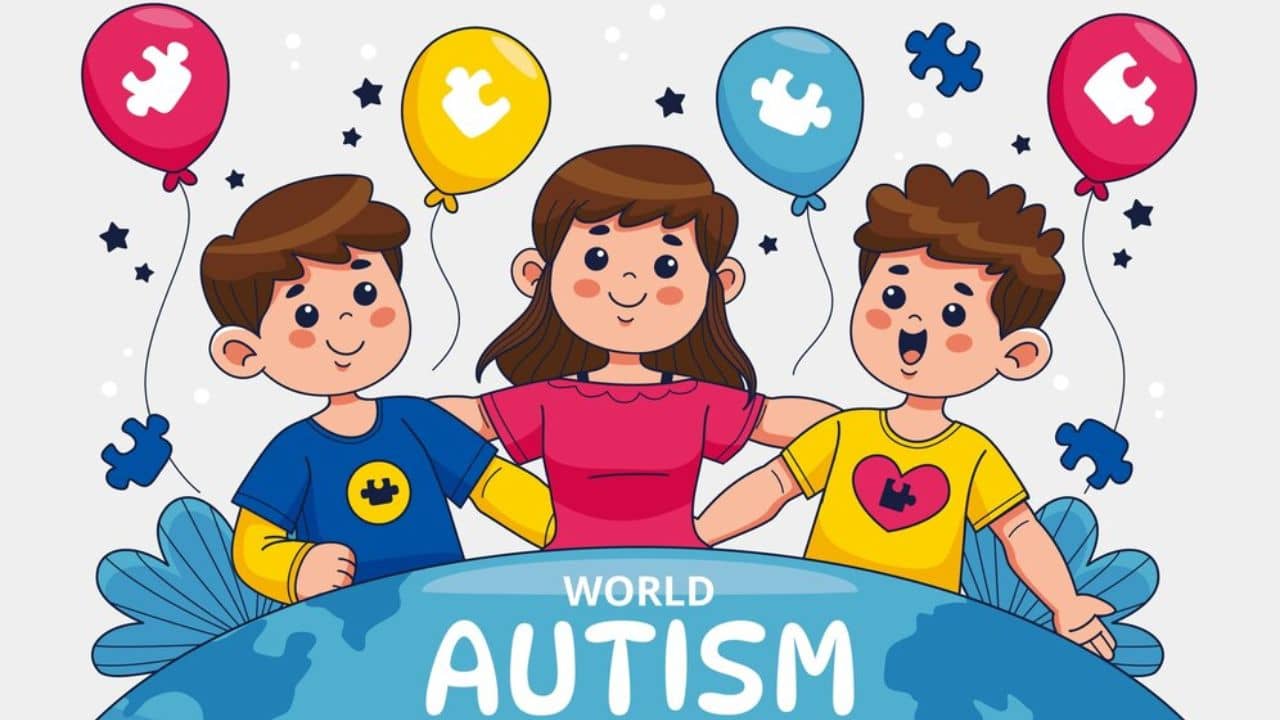
Raising Autism Awareness
1. World Autism Awareness Day:
- Date: Celebrated annually on April 2nd.
- Purpose: To increase understanding and acceptance of people with autism, promote awareness of the challenges they face, and encourage early diagnosis and intervention.
- Activities: Lighting buildings and landmarks in blue, organizing community events, and promoting social media campaigns.
2. Autism Awareness Month:
- Date: April is recognized as Autism Awareness Month.
- Purpose: To dedicate an entire month to spreading awareness, educating the public, and promoting acceptance and inclusion.
- Activities: Hosting seminars, distributing informational materials, fundraising events, and showcasing stories of individuals with autism.
3. Autism Awareness Posters and Campaigns:
- Purpose: Visual materials such as posters, infographics, and brochures help disseminate information about autism, its symptoms, and the importance of early intervention.
- Campaigns: Engaging in social media campaigns using hashtags like #LightItUpBlue, #AutismAwareness, and #DifferentNotLess to reach a broader audience.
4. Educational Programs:
- Schools and Communities: Implementing educational programs in schools and communities to teach children and adults about autism.
- Workshops and Training: Conducting workshops and training sessions for teachers, healthcare providers, and employers to better understand and support individuals with autism.
Support for Individuals with Autism
1. Early Intervention Services:
- Importance: Early intervention can significantly improve the development of children with autism, addressing communication, social, and behavioral challenges.
- Services: Speech therapy, occupational therapy, physical therapy, and applied behavior analysis (ABA).
2. Educational Support:
- Individualized Education Programs (IEPs): Customized plans that outline specific educational goals and the support needed to achieve them.
- Special Education Services: Providing tailored instruction and resources to help children with autism succeed academically.
3. Therapeutic Support:
- Behavioral Therapy: Interventions such as ABA to help modify challenging behaviors and develop essential skills.
- Speech and Language Therapy: Assisting with communication skills, both verbal and non-verbal.
- Occupational Therapy: Addressing sensory processing issues and developing daily living skills.
4. Medical and Nutritional Support:
Medications: While there are no medications to cure autism, certain medications can help manage symptoms like anxiety, hyperactivity, and irritability.
Dietary Interventions: Some families explore dietary changes and supplements to address specific health concerns, though these should be guided by healthcare professionals.
5. Social Skills Training:
- Programs: Social skills groups and training programs designed to help individuals with autism navigate social interactions and build relationships.
- Peer Support: Encouraging peer support systems and buddy programs to promote inclusion and social engagement.
6. Family Support:
- Support Groups: Providing a space for parents and caregivers to share experiences, seek advice, and find emotional support.
- Respite Care: Offering temporary relief for caregivers, allowing them time to rest and recharge.
7. Community Integration:
- Inclusive Activities: Promoting participation in community activities, sports, and recreational programs that accommodate individuals with autism.
- Employment Support: Offering vocational training, job coaching, and workplace accommodations to help individuals with autism succeed in the workforce.
8. Awareness in Healthcare:
- Training for Healthcare Providers: Ensuring that healthcare providers are trained to recognize the signs of autism and provide appropriate care.
- Accessible Services: Making healthcare services more accessible and accommodating to the needs of individuals with autism.
Raising awareness and providing comprehensive support for individuals with autism and their families are essential steps towards creating an inclusive and understanding society. By promoting awareness through global events, educational programs, and social campaigns, we can foster a culture of acceptance. Offering tailored support services—from early intervention to vocational training—ensures that individuals with autism have the resources they need to thrive at every stage of life.
Resources and Support for Autism
Navigating the world of autism can be challenging for individuals and their families, but numerous resources and support systems are available to provide assistance, guidance, and community. These resources span from medical and therapeutic support to educational and social services, ensuring a comprehensive network of aid.
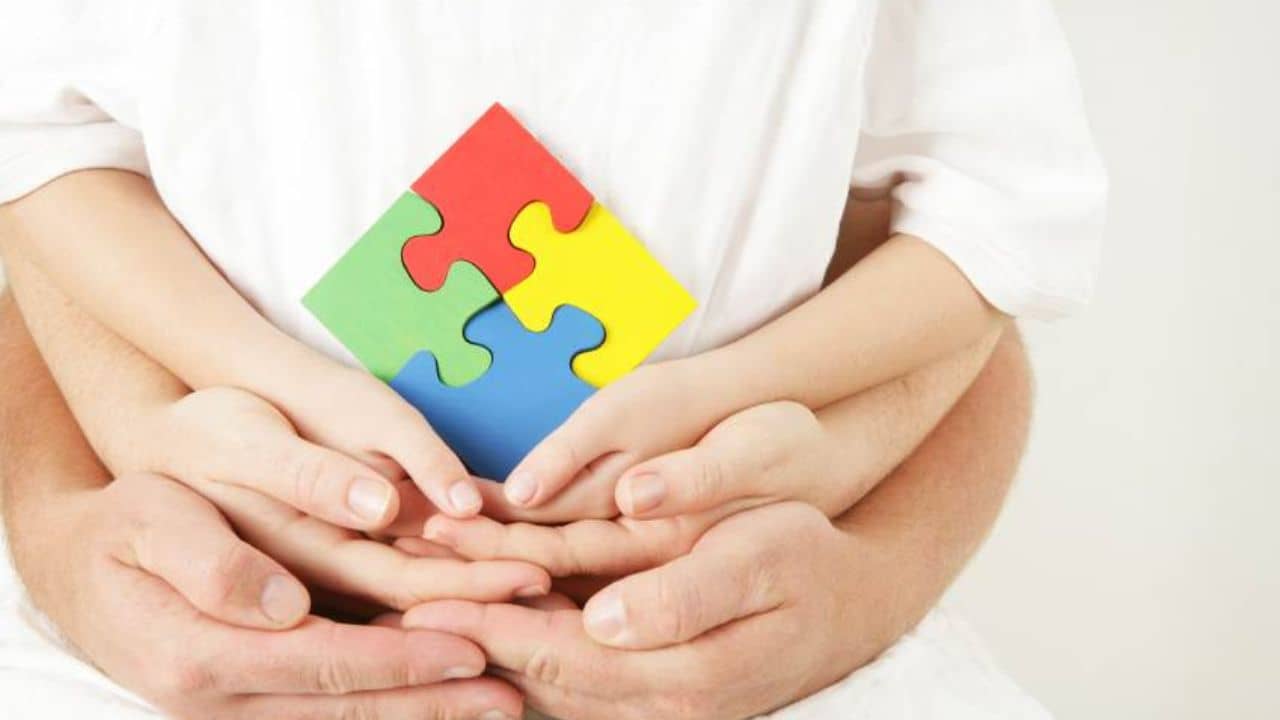
Medical and Therapeutic Support
1. Healthcare Providers and Specialists:
- Developmental Pediatricians: Doctors who specialize in developmental and behavioral issues in children.
- Psychiatrists and Psychologists: Professionals who provide diagnostic assessments, therapy, and medication management.
- Neurologists: Specialists who address neurological aspects of autism.
2. Therapists:
- Speech Therapists: Help improve communication skills, both verbal and non-verbal.
- Occupational Therapists: Focus on developing daily living skills and addressing sensory processing issues.
- Behavioral Therapists: Implement strategies like Applied Behavior Analysis (ABA) to modify challenging behaviors and develop skills.
3. Online Directories:
- Autism Speaks Resource Guide: A comprehensive directory of services and support across the United States.
- The Autism Society’s National Helpline: Provides information and referrals to local services (1-800-3-AUTISM).
Educational Support
1. Individualized Education Programs (IEPs):
- Customized Plans: Tailored educational goals and support strategies designed to meet the unique needs of students with autism.
- Legal Rights: Under the Individuals with Disabilities Education Act (IDEA), children with autism are entitled to free and appropriate public education.
2. Special Education Services:
- In-School Support: Specialized instruction, classroom accommodations, and related services such as speech and occupational therapy.
- Inclusion Programs: Programs designed to integrate students with autism into general education classrooms with appropriate support.
3. Educational Resources:
- Autism Education Trust: Offers training programs for educators and school staff.
- National Autism Resources: Provides teaching tools, sensory products, and educational materials.
Social and Community Support
1. Support Groups:
- Parent and Caregiver Support Groups: Local and online groups provide emotional support, advice, and shared experiences.
- Autism Society Chapters: Local chapters offer support groups, resources, and advocacy efforts.
2. Community Programs:
- Recreational Activities: Inclusive sports programs, camps, and arts activities designed for individuals with autism.
- Social Skills Groups: Facilitated groups that help individuals with autism develop and practice social interactions in a structured setting.
3. Respite Care:
- Temporary Relief for Caregivers: Services that provide short-term care for individuals with autism, allowing primary caregivers time to rest and recharge.
- Local Resources: Respite care can often be found through local disability organizations or social services departments.
Vocational and Independent Living Support
1. Vocational Training Programs:
- Job Coaching: Personalized support to help individuals with autism find and maintain employment.
- Workshops and Training: Programs that teach job skills, workplace behavior, and vocational tasks.
2. Independent Living Services:
- Life Skills Training: Programs that teach cooking, budgeting, personal care, and other essential independent living skills.
- Supported Living: Housing options that provide varying levels of support to help individuals live independently.
3. Employment Resources:
- Autism Speaks Employment Tool Kit: A guide for job seekers with autism to navigate the employment process.
- The Arc’s Employment Services: Offers job training, placement, and support services.
Advocacy and Legal Resources
1. Legal Advocacy:
- Disability Rights Organizations: Groups like Disability Rights Education and Defense Fund (DREDF) provide legal assistance and advocacy for individuals with disabilities.
- Special Education Advocates: Professionals who help families navigate the education system and ensure their child’s legal rights are upheld.
2. Policy and Advocacy Groups:
- Autism Society of America: Works on policy advocacy and provides resources for understanding autism-related legislation.
- Autistic Self Advocacy Network (ASAN): An organization run by and for autistic people advocating for rights, policy changes, and social acceptance.
3. Financial Assistance:
- Government Programs: Social Security Disability Insurance (SSDI) and Supplemental Security Income (SSI) for individuals with disabilities.
- Grants and Scholarships: Various organizations offer financial aid for therapies, educational programs, and respite care.
Online Resources and Information
1. Informational Websites:
- Autism Speaks: Offers a wide range of resources, including toolkits, research, and support services.
- CDC’s Autism Information Center: Provides information on symptoms, diagnosis, and treatment options.

2. Online Communities:
- Forums and Social Media Groups: Platforms like Reddit, Facebook, and specialized forums provide spaces for discussion, advice, and support.
- Blogs and Vlogs: Personal stories and experiences shared by individuals with autism and their families.
3. Research and Publications:
- PubMed and Google Scholar: Databases for finding the latest research studies and articles on autism.
- Autism Journals: Academic journals dedicated to autism research, such as the Journal of Autism and Developmental Disorders.
A wealth of resources and support systems are available for individuals with autism and their families, covering medical, educational, social, and vocational needs. Utilizing these resources can significantly enhance the quality of life for those affected by autism, promoting their well-being, development, and integration into the community. Continuous awareness and advocacy efforts are essential to ensure that these supports remain robust and accessible.
Famous People with Autism
Autism Spectrum Disorder (ASD) affects individuals across all walks of life, including those who have achieved significant recognition in various fields. Highlighting the achievements of famous people with autism not only raises awareness but also helps to dispel myths and stereotypes about the condition. Here are some notable individuals with autism who have made remarkable contributions to their respective fields:
1. Temple Grandin
Field: Animal Science, Autism Advocacy
Achievements: Temple Grandin is a prominent professor of animal science at Colorado State University and a leading advocate for autism awareness. Diagnosed with autism at a young age, Grandin is renowned for her work in improving animal welfare and livestock handling practices. She has written several books on autism and her life was the subject of an Emmy Award-winning HBO biopic titled “Temple Grandin.”
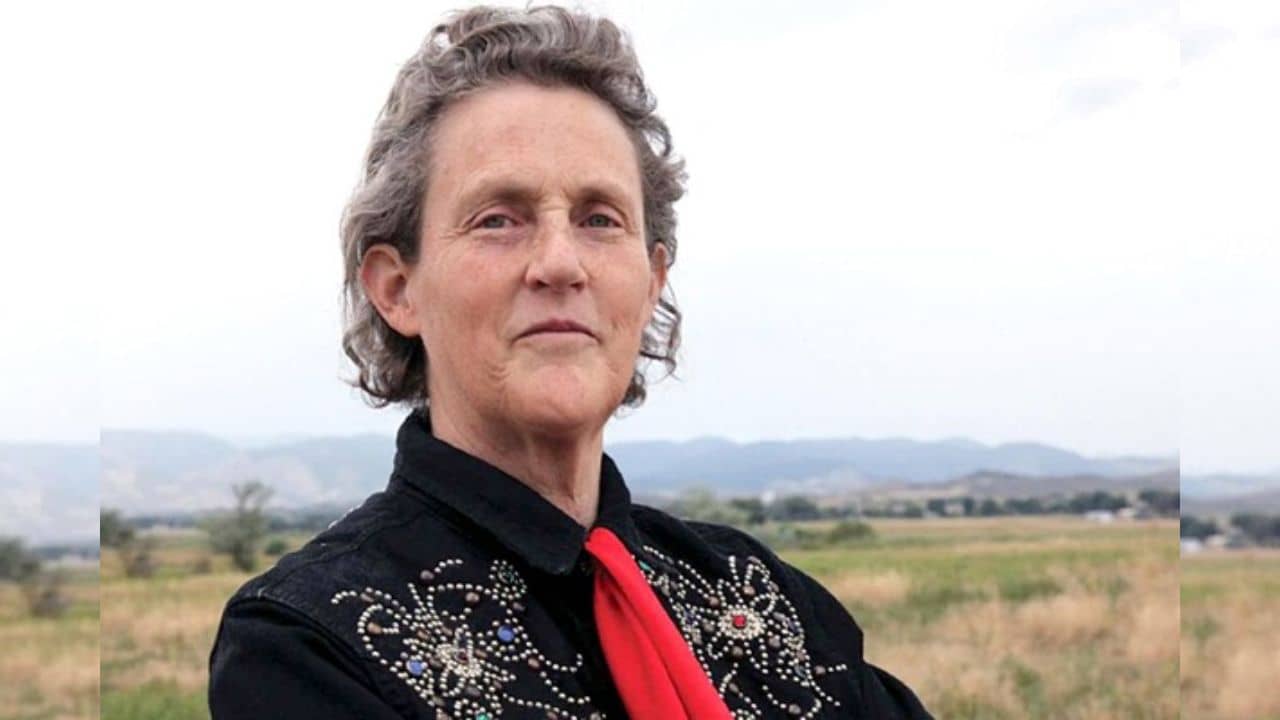
2. Dan Aykroyd
Field: Entertainment
Achievements: Dan Aykroyd is a celebrated actor, comedian, and screenwriter, best known for his roles in “Ghostbusters” and “The Blues Brothers.” Aykroyd has spoken openly about his diagnosis with Asperger’s Syndrome, a form of autism. He attributes some of his creative success to the focus and unique perspective provided by his condition.

3. Satoshi Tajiri
Field: Video Game Design
Achievements: Satoshi Tajiri is the creator of the Pokémon franchise, one of the most successful video game and entertainment franchises in the world. Diagnosed with autism, Tajiri’s intense focus and passion for collecting insects as a child inspired the creation of Pokémon, which has since become a global phenomenon.

4. Tim Burton
Field: Filmmaking
Achievements: Tim Burton is an acclaimed filmmaker known for his distinctive style in movies such as “Edward Scissorhands,” “The Nightmare Before Christmas,” and “Beetlejuice.” While he has not been formally diagnosed, his former partner, Helena Bonham Carter, has suggested that he exhibits traits consistent with Asperger’s Syndrome.

5. Daryl Hannah
Field: Acting
Achievements: Daryl Hannah is a successful actress known for her roles in films like “Splash,” “Blade Runner,” and “Kill Bill.” Diagnosed with autism as a child, Hannah faced significant challenges early in her career but has become an advocate for autism awareness and environmental causes.

6. Susan Boyle
Field: Music
Achievements: Susan Boyle is a Scottish singer who gained international fame after her stunning performance on “Britain’s Got Talent” in 2009. She revealed that she was diagnosed with Asperger’s Syndrome as an adult. Boyle’s success in the music industry has made her an inspiration to many.

7. Greta Thunberg
Field: Environmental Activism
Achievements: Greta Thunberg is a Swedish environmental activist known for her efforts to combat climate change. Diagnosed with Asperger’s Syndrome, Thunberg refers to her autism as her “superpower,” enabling her to focus intensely on her activism and speak out against global leaders for their inaction on climate issues.

8. Anthony Hopkins
Field: Acting
Achievements: Sir Anthony Hopkins, an Academy Award-winning actor known for his role as Hannibal Lecter in “The Silence of the Lambs,” revealed in 2017 that he was diagnosed with Asperger’s Syndrome. His focus and dedication to his craft have made him one of the most respected actors of his generation.

9. James Durbin
Field: Music
Achievements: James Durbin is a singer and guitarist who gained fame as a finalist on “American Idol” in 2011. Diagnosed with Asperger’s Syndrome and Tourette syndrome, Durbin has used his platform to raise awareness about autism and inspire others with his story.

The achievements of these individuals demonstrate that autism is not a barrier to success. Their stories inspire and educate, showing that with understanding, support, and acceptance, people with autism can excel in various fields and make significant contributions to society. Recognizing the talents and accomplishments of those with autism helps to foster a more inclusive and supportive world.
Conclusion
Autism is a multifaceted condition that affects individuals uniquely. Understanding the meaning of autism, recognizing the symptoms, and seeking appropriate treatments can make a significant difference in the lives of those affected by autism spectrum disorder. Through increased awareness and support, we can build a more inclusive and accepting world for everyone on the autism spectrum.
Frequently Asked Questions (FAQs) About Autism
Understanding Autism Spectrum Disorder (ASD) can be complex due to its wide range of symptoms and varying degrees of severity. Here are some frequently asked questions about autism that cover essential aspects of the condition, from its definition to treatments and support.
1. What is Autism?
Autism Spectrum Disorder (ASD) is a developmental disorder characterized by challenges with social interaction, communication, and repetitive behaviors. The symptoms can vary widely in type and severity, making each individual’s experience with autism unique.
2. What are the main symptoms of autism?
Common symptoms of autism include:
- Difficulty with communication (verbal and non-verbal).
- Challenges with social interactions.
- Repetitive behaviors and routines.
- Sensory sensitivities (e.g., sensitivity to light, sound, texture).
- Specialized interests or intense focus on specific topics.
3. How is autism diagnosed?
Autism is diagnosed through a combination of behavioral assessments and developmental evaluations. Healthcare professionals such as developmental pediatricians, psychologists, and neurologists use standardized tools and observations to determine if an individual meets the criteria for ASD.
4. What causes autism?
The exact causes of autism are not fully understood, but it is believed to result from a combination of genetic and environmental factors. Research indicates that genetic mutations and variations can increase the risk, while environmental influences during prenatal development may also play a role.
5. Can autism be cured?
There is no cure for autism. However, early intervention and a range of treatments can help manage symptoms and support development. These interventions can significantly improve the quality of life for individuals with autism.
6. What treatments are available for autism?
Treatments for autism include:
- Behavioral therapies (e.g., Applied Behavior Analysis).
- Speech and language therapy.
- Occupational therapy.
- Social skills training.
- Medications to manage specific symptoms like anxiety or hyperactivity.
7. What is the difference between autism and Asperger’s Syndrome?
Asperger’s Syndrome was previously considered a separate condition but is now included under the umbrella of Autism Spectrum Disorder in the Diagnostic and Statistical Manual of Mental Disorders (DSM-5). Individuals with Asperger’s often have milder symptoms and no significant delays in language or cognitive development.
8. How can I support a person with autism?
Supporting a person with autism involves understanding their unique needs and challenges. Strategies include:
- Providing clear and consistent communication.
- Creating structured and predictable environments.
- Encouraging and facilitating social interactions.
- Being patient and flexible.
- Seeking professional guidance and therapy when necessary.
9. Is autism genetic?
Research shows that genetics play a significant role in the development of autism. Many genes are associated with an increased risk of autism, though no single gene causes it. Family history can be a strong indicator, as autism tends to run in families.
10. What is Virtual Autism?
Virtual autism refers to a hypothesis suggesting that excessive screen time and lack of social interaction during critical developmental periods can result in autism-like symptoms. This term is still under research and is not a formally recognized diagnosis.
11. How common is autism?
Autism is relatively common, with estimates suggesting that about 1 in 54 children in the United States are diagnosed with ASD, according to the Centers for Disease Control and Prevention (CDC).
12. What is the autism spectrum?
The autism spectrum refers to the range of symptoms and severity seen in individuals with ASD. The spectrum includes individuals with varying abilities, from those who require significant support to those who live independently and have high-functioning autism.
13. What are early signs of autism in children?
Early signs of autism in children may include:
- Lack of eye contact.
- Delayed speech and language skills.
- Limited interest in playing with peers.
- Repetitive behaviors, such as hand-flapping or rocking.
- Difficulty understanding or responding to social cues.
14. How is autism in adults diagnosed?
Autism in adults is diagnosed through clinical evaluations by healthcare professionals who specialize in ASD. Diagnosis may include reviewing childhood behavior, conducting interviews, and using diagnostic tools tailored for adults.
15. What support services are available for families of individuals with autism?
Support services for families include:
- Parent support groups.
- Respite care.
- Educational workshops and training.
- Access to professional therapists and counselors.
- Information and resources from autism organizations.
16. Can people with autism lead independent lives?
Many individuals with autism can lead independent and fulfilling lives, especially with early intervention and ongoing support. The level of independence varies, with some needing minimal assistance and others requiring more substantial support.
17. Are there famous people with autism?
Yes, several well-known individuals have been diagnosed with autism, including:
- Temple Grandin, animal scientist and autism advocate.
- Dan Aykroyd, actor and comedian.
- Satoshi Tajiri, creator of Pokémon.
- Susan Boyle, singer.
18. How can schools support students with autism?
Schools can support students with autism by:
- Developing Individualized Education Programs (IEPs).
- Providing special education services.
- Offering speech and occupational therapy.
- Creating inclusive and supportive classroom environments.
- Training staff to understand and meet the needs of students with autism.
19. What are the types of autism?
Autism Spectrum Disorder encompasses a range of presentations, often classified based on the level of support required:
- Level 1: Requiring support.
- Level 2: Requiring substantial support.
- Level 3: Requiring very substantial support.
20. How can awareness and acceptance of autism be promoted?
Awareness and acceptance can be promoted through:
Participating in events like World Autism Awareness Day.
Educating the public about autism.
Sharing stories and experiences of individuals with autism.
Advocating for inclusive policies and practices.
Supporting organizations that provide resources and advocacy for people with autism.

